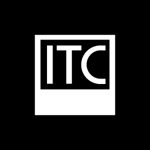Webfonts puede utilizarse en un único dominio. Las agencias responsables de varios sitios web, por ejemplo las agencias de diseño web o los proveedores de alojamiento, no pueden compartir una misma licencia de webfont entre varios sitios web. o proveedores de hosting, no pueden compartir una misma licencia de webfont entre varios sitios web.
Cada vez que se carga la página web que utiliza el kit webfont (es decir, el CSS del kit webfont que contiene la regla @fuente-face), el sistema de recuento cuenta una única página vista por cada webfont del kit webfont. del kit webfont.
Para el uso en imágenes gráficas mostradas en el sitio web, considere en su lugar una licencia Desktop , ya que la mayoría lo permiten.
MyFonts ofrece tres tipos de licencias webfont: Anual, Pago único y Pago por uso. Sólo una de estas de estos tres tipos. Haga clic aquí para Más información.
